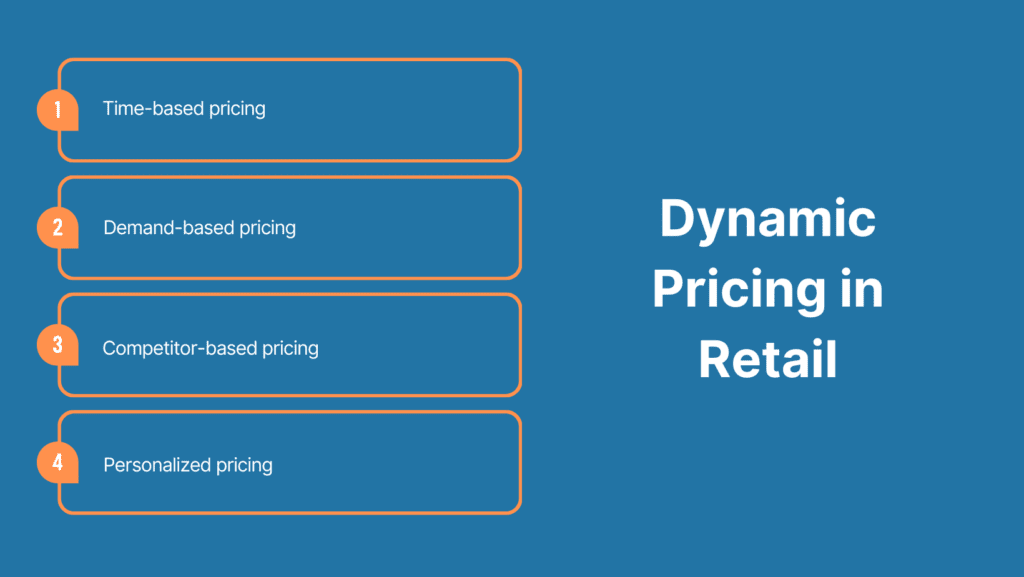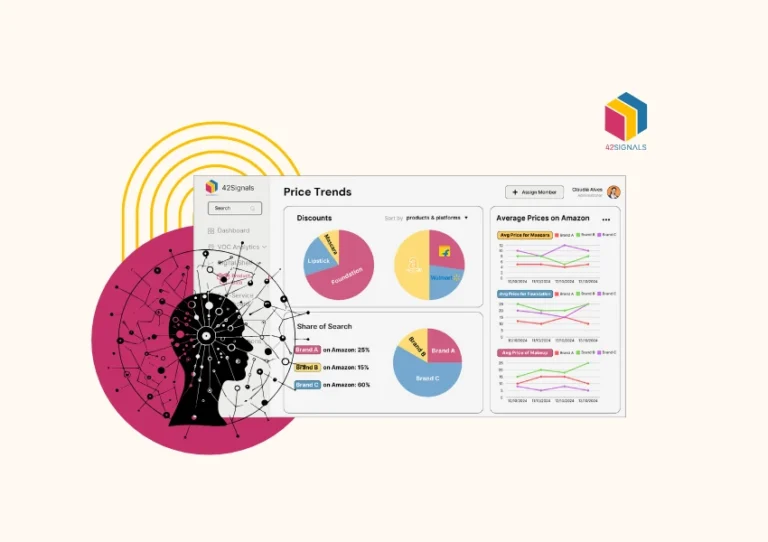What is eCommerce Price Tracking
Ecommerce price tracking is used by businesses to monitor and analyze the prices of products sold by other online retailers. This is typically done using specialized software or tools that automatically track the prices of products listed on various ecommerce websites.
The main goal of ecommerce price tracking is to help businesses and consumers make more informed purchasing decisions. By monitoring price trends over time, ecommerce price tracking tools can identify when prices drop or rise, helping consumers find the best deals and businesses optimize their pricing strategies.
Ecommerce price tracking can also provide valuable insights into the pricing strategies of competitors and help businesses stay competitive by adjusting their prices accordingly.
Competitor Price Tracker
A competitor price tracker is commonly used in ecommerce to help businesses stay competitive and adjust their pricing strategies in response to market trends.
The competitor price tracker typically works by collecting pricing data from various sources such as online retailers, marketplaces, and other ecommerce platforms. This data is then analyzed and compared to the prices offered by the business using the tool. The results can be displayed in various formats such as graphs, charts, and tables, making it easier for businesses to identify patterns and trends.
By using a competitor price tracker, businesses can gain insights into their competitors’ pricing strategies, identify opportunities to adjust their own prices, and optimize their pricing strategies to increase their competitiveness and profitability. It can also help businesses to identify market trends, consumer preferences, and changes in demand, which can inform their overall business strategy.

How do you Monitor the Price of a Product
There are several ways to monitor the price of a product in an ecommerce industry, including:
1. Manual tracking
This involves regularly visiting ecommerce platforms and online retailers to check the prices of the product you’re interested in.
2. Data scraping
Involves using softwares to extract pricing data directly from ecommerce websites. This method can be more complex and may require technical expertise, but it can provide more detailed and accurate data.
3. DaaS Providers
You can also hire DaaS providers or platforms to monitor the price of a product for you. These services can use specialized software to track prices and provide you with reports and insights.
4. Automated price tracking tools
These are specialized software tools that automatically monitor prices of products on ecommerce platforms and online retailers. They can be customized to track specific products or categories, and can provide alerts when prices change.
Dynamic Pricing in Retail
Dynamic pricing is a pricing strategy in which the price of a product or service is adjusted in real-time based on market conditions and other factors. In the retail and ecommerce industry, dynamic pricing can be used to optimize the pricing strategies and maximize profits.
Here are some examples of how dynamic pricing can be used in the retail and ecommerce industry:

- Time-based pricing: Prices can be adjusted based on the time of day, day of the week, or season. For example, a retailer may offer discounts during off-peak hours to attract more customers.
- Demand-based pricing: Prices can be adjusted based on demand. For example, during peak shopping seasons such as Christmas, retailers may increase the price of popular products due to high demand.
- Competitor-based pricing: Prices can be adjusted based on the prices offered by competitors. For example, if a competitor offers a lower price for a product, a retailer may adjust their price to remain competitive.
- Personalized pricing: Prices can be adjusted based on customer data such as purchase history, location, and browsing behavior. For example, a retailer may offer personalized discounts to customers who have previously purchased similar products.
Dynamic pricing is made possible through advanced algorithms used by ecommerce insights tools that collect data from various sources such as competitor pricing, consumer behavior, and market trends. By using dynamic pricing, retailers and ecommerce businesses can optimize their pricing strategies, increase sales, and maximize profits. However, it is important to balance the benefits of dynamic pricing with the potential risks, such as customer dissatisfaction and price wars with competitors.
Top eCommerce Price Tracking Tools 2023
Price tracking platforms are designed specifically to track prices of products or services over time. They provide real-time and historical pricing data, and often include analytics tools and alerts to help businesses make informed decisions about their pricing strategies. Price tracking platforms are typically used by businesses that want to monitor the prices of their own products, as well as the prices of their competitors’ products.
Here are some of the top ecommerce price tracking tools you can use in 2023:
How 42Signals can Help with eCommerce Price Tracking
Ecommerce insights tools such as 42Signals is designed to provide a broader view of e-commerce trends and insights. It can help with price tracking by providing additional context and insights that can be used to inform pricing strategies. Some ways that 42Signals can help with price tracking include:
1. Competitor analysis
It can help identify key competitors in a particular market and track their pricing strategies over time. Businesses can understand where they stand in relation to their competitors and adjust their pricing accordingly.
2. Market analysis
It can provide insights into overall market trends and pricing strategies which can help businesses identify opportunities to differentiate themselves from their competitors or adjust their pricing strategies to better reflect market trends.
3. Customer insights
It can provide insights into customer behavior, preferences, and purchasing patterns. This can help understand how their pricing strategies are impacting customer behavior and adjust their pricing accordingly.
4. Product research
It can also help businesses identify popular products and price points in a particular market and optimize their pricing strategies to better compete with other products in the same market.





